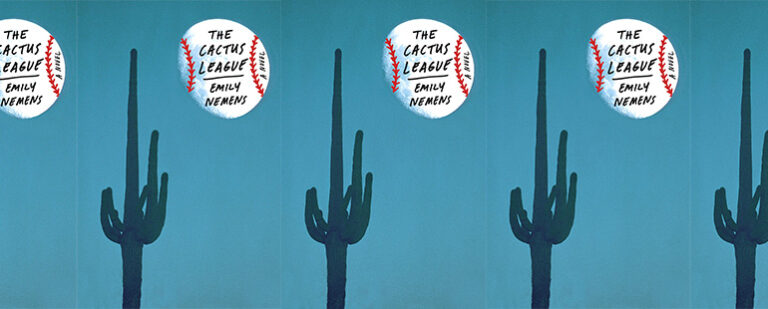“How Do You Make the Face for Yay?”

Stories we tell about ourselves and one another affect the way we understand the world around us. The default narrator, “unmarked,” is understood to be white, hetero, probably male, certainly cisgendered, and invariably nondisabled. When we encounter one another in real life settings, we seek cues to the other’s identity—consciously or not (and with all the problems implicit bias causes), we gauge our own response based on what we see there. Another person’s identity provides a kind of anchor, a way to situate ourselves. When identity doesn’t present with well-established external cues, it’s said to be “invisible.” This includes disabilities that dramatically impact the internal experience of the disabled person. Autistic people, people with depression or mood disorders, or people with mental disabilities are all said to have invisible disabilities. In a phrase lifted from other marginalized communities, the disabled person is said to “pass.”
Traditional storytelling often minimizes the intersection between internal and external experiences, but graphic novels rely on this to fully tell the story. These narratives can show in words and pictures the complexity of disability and its various intersections: with visibility, with race, gender, sexuality. There’s privilege in passing for unmarked—not everyone has that choice—but it’s privilege with a price. The price, also invisible, means the person is twice marked: first with the disability, then with the stress that comes from trying to hide it.
In Hyperbole and a Half, Allie Brosh has two chapters about one invisible disability: depression. Her narrator—a kind of genderless, shapeless stick figure with giant eyes and a line for a mouth—is nevertheless imbued with vivid emotional presence. The narrative is told in paragraphs that run between the images, explaining what we’re seeing from a great distance: “I just woke up one day feeling sad and helpless for absolutely no reason,” she writes. “It’s disappointing to feel sad for no reason.” The tone is distant, bemused. In a reversal of time, the past tense narration is understood to be the present tense creator, the one who today is drawing the reality of her already-lived experience.
The story she’s telling is of her own depression, shown in pictures, and written in the present tense. The conflict of Brosh’s inner dialogue (“Hey, what are you doing? Why are you crying? Did you know that some people have pets that are dead? And some people have diseases and tumors?”) shows the internal reality of depression. When Brosh’s depressed self slings a stack of horror movies onto the rental counter, the clerk asks innocently, “Having a party, eh?” Of course, the reader knows that there’s no chance of that happening, so this exchange shows us that as vividly as the onset of depression has been drawn for the reader, it’s gone unnoticed by those in Brosh’s everyday life.
Not showing feelings and not feeling them may look similar from the outside, but inside the difference is dramatic. As Brosh’s depression intensifies, she moves past feelings of sadness and into a field of no feelings at all. To an external observer, this looks like a person who’s not crying as much: the observer is relieved. But this relief isn’t shared by the depressed person. No longer unable to stop crying, there’s no longer any visible evidence of depression. Brosh shows herself trying to navigate social norms, now that she’s once more able to pass. But here the stress starts to show: the tension between the lack of feelings inside, and the requirement to show them outside. “How do you make the face for yay? Am I doing it? I hope I’m doing it.” Quickly followed by, “Uh oh. Sad face,” and finally resignation: “I’m doing the wrong face. I’m sure of it.”
Another common way to depict invisible disabilities is by having the character go through the diagnostic process. A few panels might show the professional clinician providing a copy of the Diagnostic and Statistic Manual (or DSM) diagnosis to their client or patient, so that the reader can see the description. You’ll see this in, for example, Ellen Forney’s otherwise excellent Marbles: Mania, Depression, Michelangelo and Me. This is a version of what’s sometimes called “the origin story,” which answers the question: how did the disability happen? This tradition is a misguided attempt to reassure the nondisabled that they don’t have to worry about becoming disabled themselves, rather than providing genuine information about what it’s like to live as a disabled person.
People’s lives are much more than checklists; the best depictions of disabled people don’t spend a lot of time on the way other people understand disability, but in showing the way life simply is. What’s not found in the DSM are the many large and small ways in which other people’s perspectives alter an individual experience. When a disability is invisible, graphic novels show the effect that social response has on someone’s lived life. Look Straight Ahead, an online graphic novel by Elaine M. Will, opens with the main character walking alone, not unhappily. But the instant he encounters other people, he starts to struggle: the presence of an attractive girl shows him “melting into a puddle of toxic goo”; he’s unable to respond to the chatter of other people because he’s distracted by the appearance of things he knows “shouldn’t be there.” Again and again, the impact social views have on the person’s life is often shown as being the most challenging aspect of being disabled, rather than the disability itself.
Graphic novels show us how much we don’t see of each other. Like the clerk at Brosh’s video store, people make assumptions of each other all the time. Reasonable assumptions are based on shared interpretations of actions, behaviors, and language. Graphic novels draw attention to these assumptions we make, and how often we are wrong.


